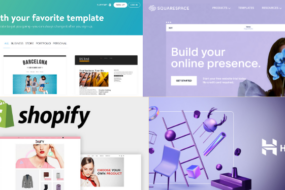
In the ever-evolving landscape of web development, the integration of Augmented Reality (AR) and Virtual Reality (VR) with website builders has emerged as a game-changer. This revolutionary synergy not only enhances user experience but also opens new dimensions for creative and interactive online spaces.
Unveiling the AR & VR Fusion
Augmented Reality and Virtual Reality, once confined to specialized applications, have found a new home in website development. This fusion aims to transport users into a digitally immersive environment, blending the real and virtual worlds seamlessly.
The Evolution of Website Builders
Traditional website builders laid the foundation, but the integration of AR and VR takes it a step further. From drag-and-drop interfaces to sophisticated design elements, the evolution is palpable.
Impact on User Engagement
AR and VR integration elevates user engagement to unprecedented levels. Visitors can now interact with products, services, or information in ways unimaginable before, fostering a deeper connection.
Crafting the Digital Realm: How It Works
Understanding the mechanics behind AR and VR integration is crucial. Website builders use markers or sensors to trigger AR elements, while VR relies on headsets to create immersive experiences. The synergy lies in the seamless amalgamation of these technologies.
Website Builder Compatibility
One of the key challenges is ensuring compatibility with existing website builders. The market is witnessing a surge in platforms offering native support, making the integration process smoother.
AR & VR Content Creation
Creating content for AR and VR requires a paradigm shift in design thinking. From 3D models to spatial sound, developers must consider multiple elements to craft an immersive digital narrative.
Navigating Challenges in Implementation
While the benefits are evident, challenges exist in implementing AR and VR seamlessly. Overcoming these hurdles is essential for a successful integration.
Technical Hurdles
From bandwidth considerations to device compatibility, technical challenges abound. Addressing these issues ensures a seamless experience across various devices and network conditions.
User Accessibility
Ensuring accessibility for users with disabilities is a critical aspect often overlooked. Striking a balance between innovation and inclusivity is imperative for ethical and effective AR and VR integration.
The Future Landscape: Innovations and Trends
As technology continues to advance, the future promises even more exciting developments in the realm of AR and VR integration with website builders.
AI Integration
The marriage of Artificial Intelligence with AR and VR opens avenues for dynamic and personalized user experiences. Smart algorithms enhance content delivery based on user behavior, preferences, and interactions.
Progressive Web Apps (PWAs)
The rise of Progressive Web Apps complements the AR and VR integration trend. These apps offer faster load times and offline functionality, enhancing the overall user experience.
Final Words
In conclusion, the integration of AR and VR with website builders marks a transformative shift in the digital landscape. As developers continue to push boundaries, the synergy between the real and virtual worlds will redefine user interactions and expectations.
Commonly Asked Questions
How do I know if my website builder supports AR and VR integration?
Check the platform’s official documentation or contact support to confirm compatibility.
What types of content work best for AR and VR experiences?
3D models, interactive simulations, and spatial audio enhance the immersive nature of AR and VR.
Are there security concerns with AR and VR integration?
Implementing secure protocols and regular updates mitigate potential security risks.
Can AR and VR work on mobile devices?
Yes, many AR and VR experiences are optimized for mobile devices, offering a versatile user experience.
How can businesses leverage AR and VR for marketing purposes?
Creating interactive product demos, virtual showrooms, or immersive brand experiences enhances marketing strategies.
Advertisement












